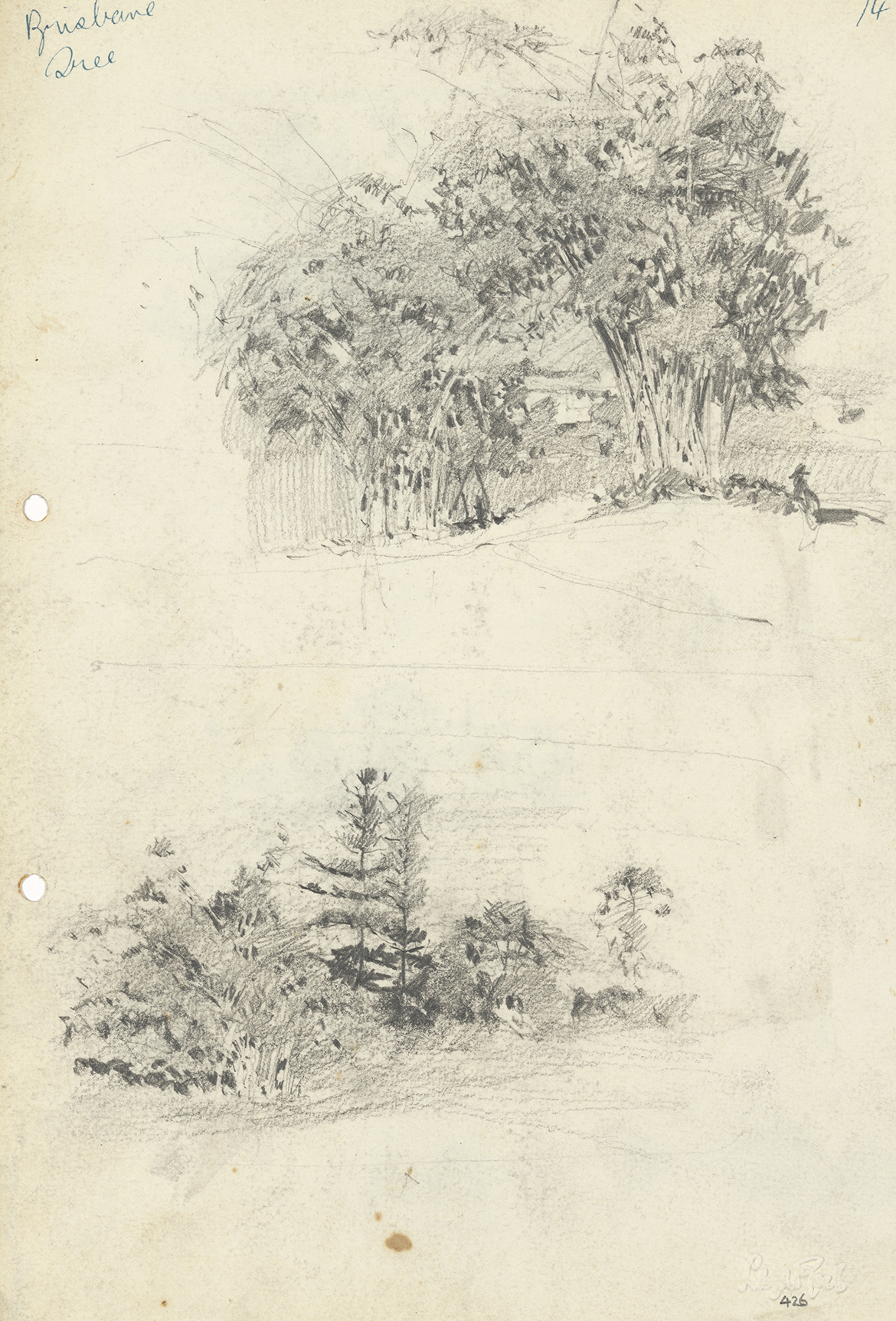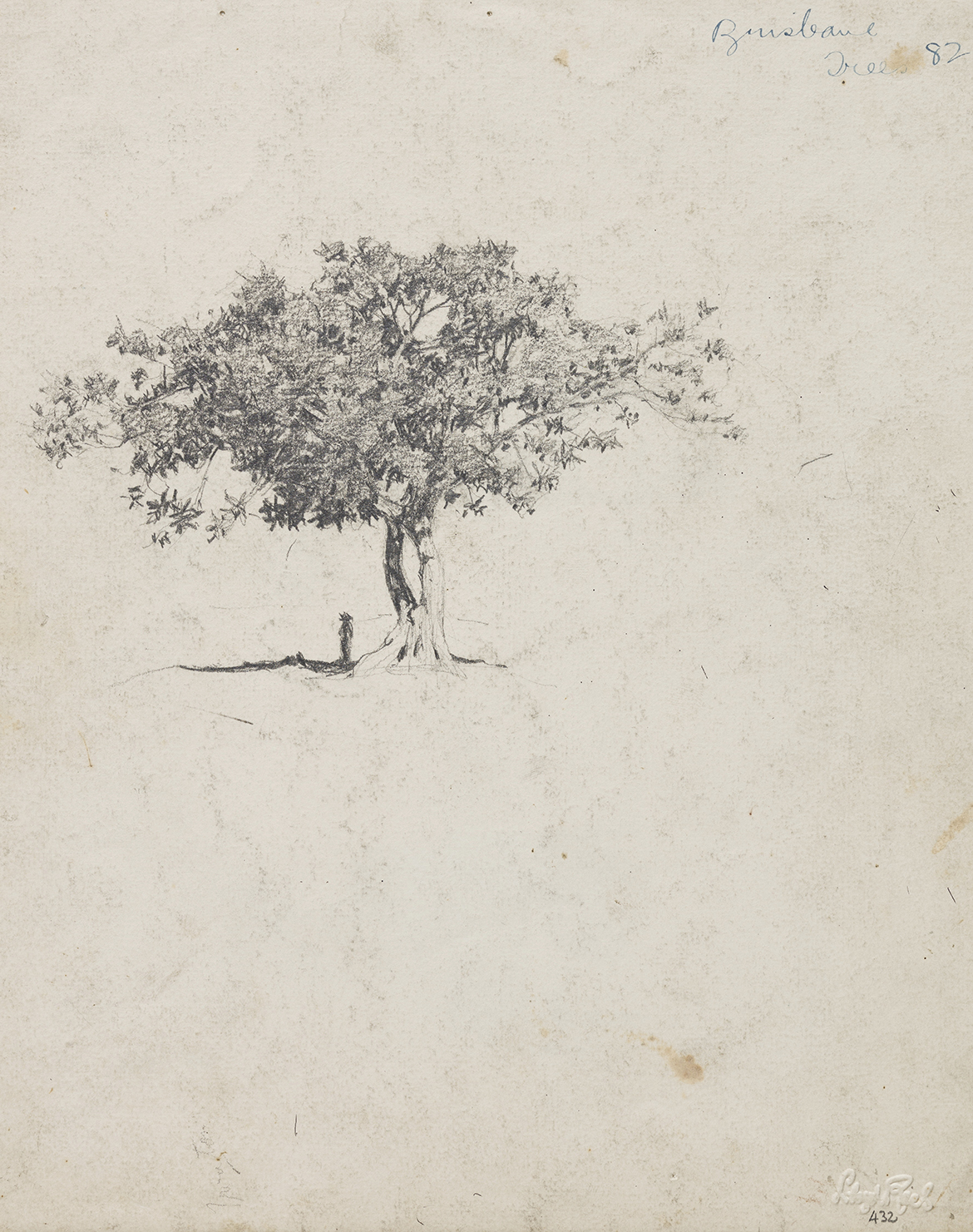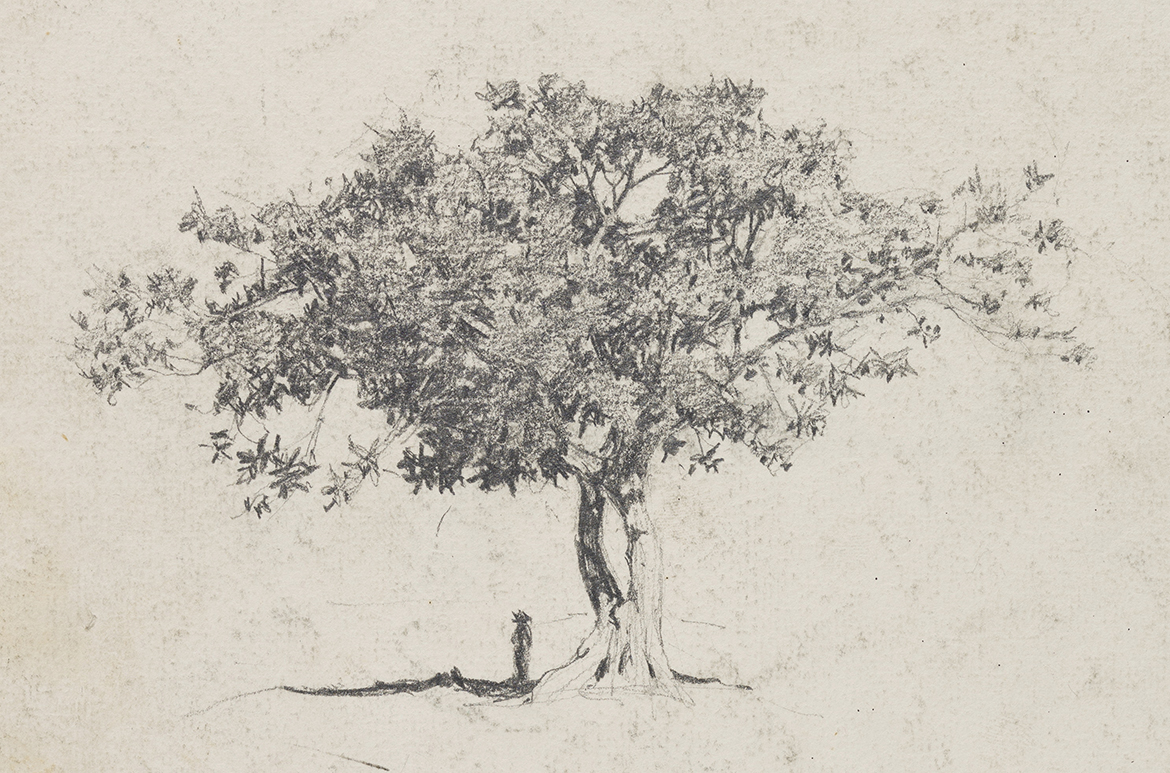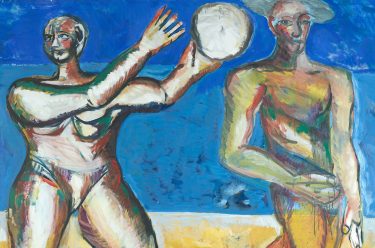Brisbane-born Lloyd Rees (1895–1988) is known for his fluid, light-saturated paintings of the Australian landscape in which the human figure and built environment harmonise with trees, cliffs and bodies of water. The artist is also remembered for his expert drafting skills honed over a lifetime of close observation and drawing.
Lloyd Rees ‘Bamboos near corner of Park and River Roads; Trees in Milton’

Lloyd Rees ‘Moreton Bay Fig at Milton, figure under tree’
The Gallery holds a large group of Rees’s early Brisbane sketches, including studies of trees, gardens and foliage that hint at humanity’s close connection to our environment. In Moreton Bay Fig at Milton, figure under tree c.1912–17(illustrated) the twin trunks of a fig reach upwards, supporting a beautifully articulated canopy. A small figure sheltering in the shadows below looks into the distance.

In Moreton Bay Fig at Milton, figure under tree, a vast, open space of free-floating potential is perfectly represented by the empty white of the artist’s paper. Rees observed:
From quite an early age I was overwhelmed with the fact of endlessness . . . Planetary systems can blow up, but the universe is endless, and our little life is set in the midst of this, and everything in it has a beginning and an end . . . [This] gives to life a sense of mystery that is always with me.1
The artist’s humble pencil studies remind us of how vital it is to explore, learn about and come to understand the world in our own way. Rees began this group of studies when he was a young man, aged only 17, who loved to draw and was training his hand and eye.
Rees lived to 93 and, as his sight faded, he was forced to abandon the great precision of line he had perfected. His late landscapes — The sunlit tower 1986 (illustrated) — became increasingly abstract and concerned with tracing the effects of light and atmosphere.
Endnote
1 Renée Free and Lloyd Rees, Lloyd Rees: The Last Twenty Years, Craftsman House, Sydney, 1990, p. 166.
Lloyd Rees ‘The sunlit tower’

#QAGOMA


